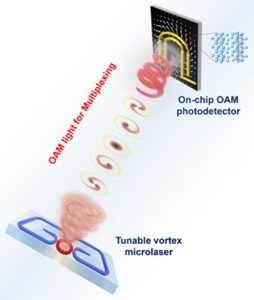
Figure 1 Integrated non-Hermitian symmetry controlled vortex microlaser [1] and topological quantum material-based vortex light photodetector [2] for sophisticated light-matter manipulation in SAM-OAM DOFs.
Spin angular momentum (SAM; intrinsic) and orbital angular momentum (OAM; extrinsic) are two different properties characterizing the chiral nature of photons. The interplay between these two different chiral degrees of freedom (DOF) has sparked significant interest leading to discovery of new physics in both classical and quantum optics, furthering our understanding and incubating emerging applications in classical and quantum communications. By encoding information in SAM-OAM DOFs can lead to a significant increase in the data carrying capacity of photonic networks. However, as of now this has been accomplished using bulky optics and on-chip generation and detection of these DOFs is particularly challenging.
By combining concepts from topological physics, spectroscopy and materials engineering of conventional and topological materials, we have demonstrated generation of tunable emission and detection of different OAM-SAM coupled states of light (Fig. 1). Our work can enable studies of topological light-matter interactions and lead to the next generation of photonic devices for integrated chiral photonic networks.
1) Z. Zhang, X. Qiao, B. Midya, K. Liu, J. Sun, T. Wu, W. Liu, R. Agarwal, J. M. Jornet, S. Longhi, N. M. Litchinitser, and L. Feng, Tunable Topological Charge Vortex Microlaser, Science 368, 760 (2020).
2) Z. Ji, W. Liu, S. Krylyuk, X. Fan, Z. Zhang, A. Pan, L. Feng, A. Davydov, and R. Agarwal, Photocurrent Detection of the Orbital Angular Momentum of Light, Science 368, 763 (2020).
